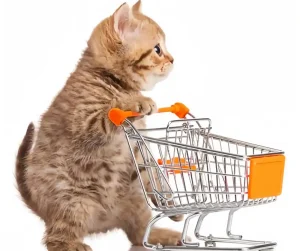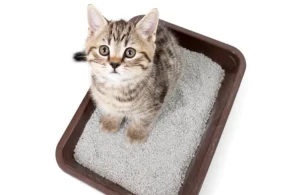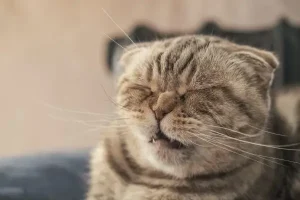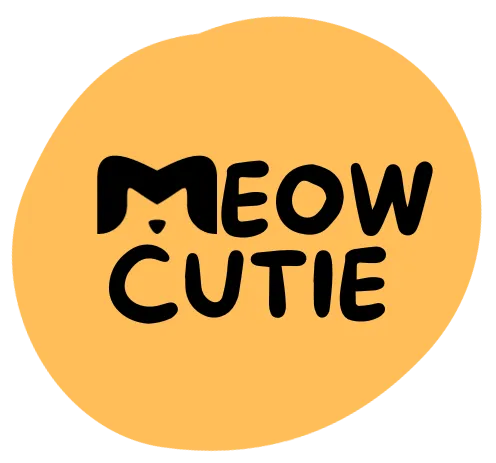Table of contents
- Pet market overview and trend analysis
- Review of the historical development of the pet consumer market
- Changes in pet economic channels, marketing, concepts, and supply chains
- The relationship between supply chain improvement and brand development
- Brand development strategy analysis
- Competition Opportunities Between Strong Brands and New Brands
- Brand concentration improvement and market structure analysis
This is a must-read article for professionals in the pet industry. To showcase the development trends and current status of China’s pet consumption market, this article will analyze the data and content of the “2023-2024 China Pet Industry White Paper.” Additionally, it will explore the trends and influencing factors of the pet consumption market in 2024, providing some references and insights for businesses and consumers in the pet industry.
Pet market overview and trend analysis
According to the white paper, the scale of China’s pet consumption market reached 102.4 billion yuan in 2023, with a year-on-year growth of 18.7%. It is expected to reach 125 billion yuan in 2024, with a year-on-year growth of 22.1%. From 2018 to 2024, the compound annual growth rate (CAGR) of China’s pet consumption market is 19.6%, higher than the global pet consumption market’s 11.2%, demonstrating the rapid development and enormous potential of China’s pet consumption market.
| years | Total number of pets(billion) | Number of dogs(billion) | Number of cats(billion) | Dog proportion | Cat proportion |
| 2023 | 0.21 | 0.11 | 0.09 | 52.40% | 42.90% |
| 2024 | 0.24 | 0.13 | 0.1 | 54.20% | 41.70% |
Increase in Pet Numbers:
In 2023, China’s total pet population reached 210 million, consisting of 110 million dogs and 90 million cats, representing 52.4% and 42.9% of the total respectively. Projections for 2024 anticipate a further increase in the pet population to 240 million, with dogs and cats numbering 130 million and 100 million respectively, accounting for 54.2% and 41.7% of the total. Over the period from 2018 to 2024, China’s pet population has experienced a compound annual growth rate (CAGR) of 9.8%, surpassing the global pet population growth rate of 6.5%.
This rapid growth is primarily attributed to China’s significant increase in pet numbers and its vast potential. Factors driving the increase in pet numbers include changes in population structure, cultural shifts, and improvements in policy and regulations.
Improvement in Pet Consumption Level:
In 2023, China’s per capita pet consumption was ¥488, with dog owners spending an average of ¥589 and cat owners ¥378, representing 60.8% and 38.7% of the total respectively. Projections for 2024 anticipate per capita pet consumption to reach ¥521, with dog owners spending ¥624 and cat owners ¥401 on average, representing 60% and 38.9% of the total respectively. Over the period from 2018 to 2024, China’s per capita pet consumption has experienced a compound annual growth rate (CAGR) of 8.5%, exceeding the global average of 4.4%.
This increase underscores the improvement and differentiation of pet consumption levels in China. Factors driving the increase in pet consumption level include the optimization of pet consumption structure, development dynamics of the pet consumption market, and the relationship between pet consumption and people’s emotional needs.
| China’s pet consumption level | ||||
| years | Consumption amount | Dog consumption amount | Cat consumption amount | Proportion |
| 2023 | ¥488 | ¥589 | ¥378 | 60.8%/38.7% |
| 2024 expected | ¥521 | ¥624 | ¥401 | 60%/38.9% |
| Pet consumption structure | ||||
| years | food | Supplies | medical | services, other |
| 2023 | 38.60% | 25.40% | 16.70% | 14.2%,5.10% |
| 2024 expected | 37.60% | 26.40% | 17.60% | 14.4%,4% |
Optimization of Pet Consumption Structure:
In 2023, China’s pet consumption market was primarily composed of food, supplies, medical care, services, and others, accounting for 38.6%, 25.4%, 16.7%, 14.2%, and 5.1% respectively. Projections for 2024 anticipate the main components of China’s pet consumption market to be food, supplies, medical care, services, and others, accounting for 37.6%, 26.4%, 17.6%, 14.4%, and 4% respectively.
From 2018 to 2024, the compound annual growth rates of various components of China’s pet consumption market are 16.8%, 22.3%, 21.4%, 18.9%, and 12.1% respectively, indicating the optimization and diversification of China’s pet consumption market structure. Factors driving the optimization of pet consumption structure include the improvement in pet consumption level, innovation and competition in the pet consumption market, and changes in pet consumption channels and marketing strategies.
Review of the historical development of the pet consumer market
The development of the pet consumption market also has its own historical evolution and phase characteristics. According to the white paper, the development of China’s pet consumption market can be divided into the following four stages:
Stage One: From the 1980s to the mid-1990s, the pet consumption market was in its infancy, with pets mainly considered luxury items for enthusiasts and the wealthy. Pet consumption primarily focused on food and supplies, with relatively low levels of expenditure. The market size was small, and the pet consumption industry lacked standardization and regulation.
Stage Two: From the mid-1990s to the early 2000s, the pet consumption market entered a developmental stage. Pets gradually became companions for urban residents, and consumption extended to include medical care and services. There was an increase in pet consumption levels, and the market expanded accordingly. Some brands and distribution channels began to emerge in the pet consumption industry.
Stage Three: From the early 2000s to the mid-2010s, the pet consumption market reached maturity. Pets became integral members of many households, and pet consumption began to exhibit characteristics of personalization, high-end products, and socialization. There was a significant increase in pet consumption levels, leading to rapid growth in market size. The pet consumption industry witnessed the emergence of leading enterprises and innovative models.

Stage Four: From the mid-2010s to the present, the pet consumption market is undergoing a period of transformation. Pets have become a source of emotional support and fulfillment for humans, catering to their spiritual needs and emotional desires. Pet consumption is witnessing trends towards diversification, segmentation, and smart technology. The level of pet consumption continues to optimize, leading to sustained expansion of the pet consumption market. The pet consumption industry is venturing into new fields and formats.
The development of the pet consumption market ultimately revolves around people’s emotional needs. Pet consumption is not merely about material goods but also about emotional fulfillment. The motivation and purpose behind pet consumption are to meet people’s love and care for their pets, as well as the joy and warmth derived from them. The process and outcome of pet consumption aim to enhance interaction and communication between humans and pets, as well as to establish social relationships and a sense of belonging through pets. The significance and value of pet consumption lie in improving people’s quality of life and happiness, as well as in promoting positive energy and values transmitted by pets.
Changes in pet economic channels, marketing, concepts, and supply chains
The development of the pet consumption market has also driven changes in pet consumption channels, marketing, concepts, supply chains, and other aspects. These changes are both a reflection of and adaptation to the pet consumption market, as well as drivers and innovations within it.
Pet consumption channels are an integral part of the pet consumption market and a significant competitive advantage for the pet consumption industry. With the development of the internet and e-commerce, pet consumption channels have transitioned from traditional offline channels, such as pet stores, veterinary clinics, and pet service centers, to online channels, such as pet e-commerce platforms, pet social networks, and pet platforms.

Social media has had a tremendous impact on the pet consumption market. The pet consumption market is not only an economic market but also a social one. Pet consumers are not just consumers but also social beings. Social media platforms such as Little Red Book, WeChat, and TikTok have become important social platforms for pet consumers and significant marketing platforms for the pet consumption market.
The relationship between supply chain improvement and brand development
The development of the pet consumption market has also spurred improvements in the pet consumption supply chain and the relationship with brand development. The supply chain is a core element of the pet consumption market and a key competitive advantage for the pet consumption industry. Brands are central to the value proposition of the pet consumption market and are core assets of the pet consumption industry.
Improvements in the supply chain can enhance the quality and efficiency of pet consumption products and services, reduce costs and risks associated with pet consumption products and services, increase innovation and differentiation, and support the construction and development of pet consumption brands. Brand development can increase awareness and trust among pet consumers, enhance loyalty and word-of-mouth among pet consumers, improve satisfaction and happiness, and drive the optimization and upgrading of the pet consumption supply chain.
The development of the pet consumption market has also brought competition and product innovation in the essential needs segment of the pet consumption market. The essential needs market is the foundational segment of the pet consumption market and a major part of the pet consumption industry. It primarily includes pet food, pet medical care, pet supplies, etc., which are essential for pets’ survival and health, representing the basic needs of pet consumers.
Brand development strategy analysis
The development of the pet consumption market has also given rise to the development and competition of pet consumption brands. Brands are the core value of the pet consumption market and the core assets of the pet consumption industry. The development of brands requires clear brand positioning, reasonable brand strategies, effective brand communication, and continuous brand management. Brand positioning is the foundation and direction of brand development, representing the covenant and commitment between the brand and consumers.
Brand positioning needs to be determined based on the brand’s development stage, the competitive environment of the market, consumer needs and preferences, as well as the brand’s core strengths and characteristics. It involves defining the target market, target consumers, brand image, brand philosophy, brand values, brand appeals, brand differentiation, and other elements. Brand positioning should maintain consistency and stability while also adapting to changes and innovation.
The development of pet consumption brands in China can be divided into the following three stages:
First Stage: From the 1980s to the mid-1990s, pet consumption brands were in the embryonic stage. There were few brands, low brand awareness, weak brand influence, vague brand positioning, simple brand strategies, limited brand communication, and lack of brand management. Typical brands in this stage include Nestlé, Whiskas, and Royal Canin.
Second Stage: From the mid-1990s to the early 2000s, pet consumption brands entered a period of development. The number of brands increased, brand awareness improved, brand influence strengthened, brand positioning became clearer, brand strategies diversified, brand communication expanded, and brand management became standardized. Typical brands in this stage include Snow Mountain, Weina, and Pedigree.
Third Stage: From the early 2000s to the present, pet consumption brands entered a mature stage. There are many brands with high brand awareness, strong brand influence, precise brand positioning, flexible brand strategies, extensive brand communication, and professional brand management. Typical brands in this stage include Mefudi, NetEase Yanxuan, and In the Name of Love.
Competition Opportunities Between Strong Brands and New Brands
Brand development also faces intense competition and challenges. Brand competition requires clear objectives, effective strategies, strong competitiveness, and enduring competitive advantages. In brand competition, there is both the phenomenon of the strong getting stronger and opportunities for new brands.
The phenomenon of the strong getting stronger refers to brands that have already become market leaders or possess strong competitiveness. They can consolidate and expand their market share and influence through continuous innovation and optimization, forming brand barriers and moats to withstand the impact and challenges from competitors.

Strong brands that maintain their position typically have the following characteristics: high brand awareness, high brand loyalty, positive brand reputation, strong brand image, deep brand philosophy, high brand value, strong brand innovation, extensive brand channels, abundant brand resources, and numerous brand partnerships. These brands need to maintain their core competitiveness while adapting to market changes and consumer demands. They must continually innovate and optimize to enhance brand value and social responsibility. Some representative brands include Royal Canin, Purina, and Berrylion.
The opportunities for new brands refer to those brands that have just entered the market or possess certain potential. These brands can capitalize on market gaps and consumer needs by providing unique and high-quality products and services. They can establish new brand images and philosophies, attract and retain new consumers and markets, and develop brand characteristics and advantages, challenging and reshaping the market landscape and order. Some emerging representative brands include Blue Buffalo, NetEase Yanxuan, and Afei & Babai.
Brand concentration improvement and market structure analysis
Brand development also influences the structure and landscape of the pet consumption market. Brand concentration is an important indicator of market competition and efficiency, reflecting the level of market development and maturity.
Brand concentration can be measured by calculating the market share of various brands in the market, obtaining the market concentration ratio, or by calculating the square sum of the market shares of various brands, obtaining the Herfindahl index. Generally, the higher the market concentration ratio and Herfindahl index, the higher the brand concentration in the market, indicating weaker competition, higher efficiency, and greater maturity in the market.
According to the white paper, the brand concentration of China’s pet consumption market is continuously increasing. Taking the pet food market as an example, in 2023, the market share of the top ten brands in the Chinese pet food market was 54.2%, with a Herfindahl index of 0.09. Compared to 2018, which had a market share of 48.6% and a Herfindahl index of 0.07, there has been an increase of 5.6 percentage points and 0.02 respectively. This indicates that the brand concentration in China’s pet food market is continuously increasing, competition among brands is decreasing, brand efficiency is improving, and brand development is maturing.

The scale of the Chinese pet consumption market will continue to grow, with levels rising and structures optimizing, entering a higher stage of development. The development of the Chinese pet consumption market will increasingly focus on pet rights and welfare, enhancing pets’ quality of life, happiness, personalization, high-end services, socialization, smart technologies, as well as diversification and segmentation.
The development of the Chinese pet consumption market will increasingly rely on innovation and transformation in pet consumption channels, marketing strategies, ideologies, and supply chains. This will further promote competition and product innovation in meeting the essential needs of pets, as well as the development and competition among pet consumption brands.
By analyzing the development trends and current situation of the Chinese pet consumption market, this article highlights its importance and potential, explores opportunities and challenges, and provides insights for businesses and consumers in the pet industry. It is hoped that this article will contribute to the development of the Chinese pet consumption market, bringing more joy and happiness to both pets and humans.







